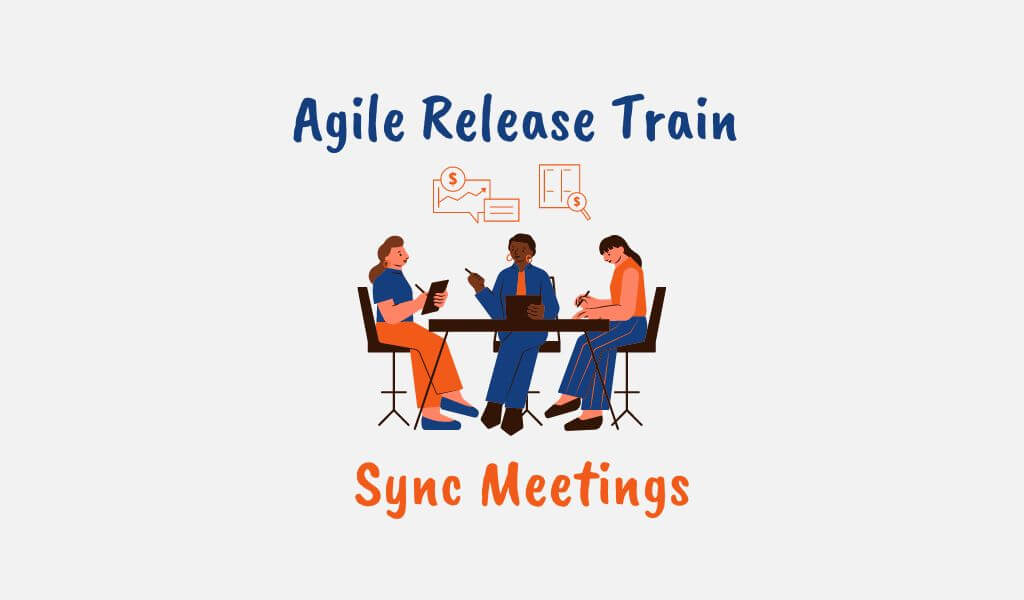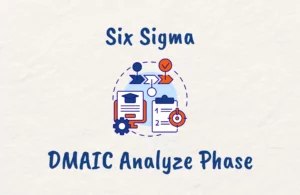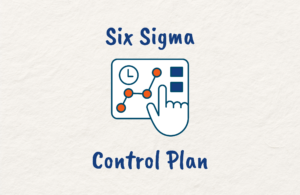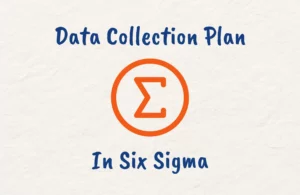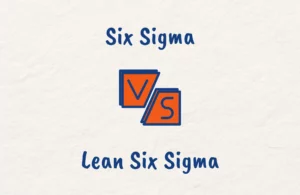When implementing the Scaled Agile Framework (SAFe) across multiple Agile teams, alignment and transparency are key. Without proper synchronization across teams, large-scale Agile efforts can easily derail. That’s where Agile Release Train sync meetings come in.
These regular sync-up meetings are essential for keeping all teams on track toward delivering value. At ART sync meetings, participants like Release Train Engineers, Scrum Masters, and Product Owners discuss progress, risks, dependencies, and alignment.
The meetings provide a cadence for issues to surface and get resolved. They also enable continuous improvement through inspect and adapt.
If you’re new to ARTs, this guide will provide an overview of ART sync meetings – their purpose, participants, agenda, and tips for driving value. With effective ART sync rhythm, large Agile projects can thrive.
What is an Agile Release Train (ART)?
An Agile Release Train (ART) is a long-lived team of Agile teams that incrementally develops, delivers, and operates one or more solutions in a value stream.
ARTs organize people around delivering value, and eliminating functional silos. As a virtual organization, an ART contains all the capabilities – software, hardware, business, etc. – needed to define, build, test, and deploy solutions.
ARTs align Agile teams to a common cadence and objectives. This synchronization facilitates continuous integration and delivery for the overall system, not just individual teams.
An ART applies systems thinking to build an integrated, cross-functional organization. Together, it has everything needed to take a solution from ideation to release and operation.
ARTs provide the alignment, visibility, and rhythm for multiple Agile teams to deliver solutions rapidly and reliably, while Release Train Engineers and other roles give ARTs the leadership to maintain alignment and resolve impediments.
What are Agile Release Train Sync Meetings?
Agile Release Train (ART) sync meetings are regular cadence meetings that provide alignment and transparency across multiple Agile teams working within an ART.
They offer a rhythm for surfacing key information and resolving issues. ART sync meetings take place at different intervals depending on the need – daily, weekly, or multiple times within a Program Increment (PI) cadence.
Common ART sync meetings include:
- Scrum of Scrums: Daily sync of Scrum Masters/teams
- ART Sync: Weekly or bi-weekly train-level sync
- PO Sync: Program Increment sync of Product Owners
- Coaches Sync: PI sync of Agile coaches
At ART sync meetings, participants like RTEs, Scrum Masters, and Product Owners discuss progress, risks, upcoming system demos, and any impediments.
These meetings are essential for large-scale Agile success and their regular rhythm provides continuous improvement through quick inspection and adaptation
Types of Agile Release Train Sync Meetings
There are a few different types of ART sync meetings that take place at various cadences to align Agile teams and surface key information.
The main ones include:
Scrum of Scrums
A Scrum of Scrums is a daily meeting typically facilitated by the Release Train Engineer (RTE). In the short 15-minute meeting, the Scrum Masters from each Agile team give a quick update on their team’s progress, impediments, and risks.
ART Sync
The regular ART Sync provides a weekly or bi-weekly opportunity for the full ART to inspect progress, issues, and dependencies.
The RTE facilitates the 1-2 hour meeting. Key participants include RTEs, Scrum Masters, Product Owners, and System and Solution Architects.
PO Sync
The Product Owner (PO) Sync takes place at the Program Increment (PI) boundary. In this half-day workshop, the POs align on upcoming PI Objectives and content. They identify dependencies between teams and prepare for the PI Planning event.
Coaches Sync
Similarly, the Coaches Sync workshop brings together Scrum Masters and other Agile coaches at the PI boundary to prepare for PI planning. They identify coaching issues and risks and plan how to collaborate on addressing those.
Purpose of Agile Release Train Sync Meetings
ART sync meetings serve several key purposes:
Facilitate Cross-Team Alignment
The primary purpose is to enable alignment across multiple Agile teams working within an ART. The meetings provide a cadence for teams to regularly inspect progress toward meeting PI Objectives and achieving the ART’s Mission.
By surfacing dependencies, risks, and issues early and often, teams can proactively collaborate on solutions which helps optimize the flow of value.
Drive Continuous Improvement
The regular ART sync rhythm facilitates continuous improvement through quick inspect and adapt cycles. Teams reflect on what’s working well and what needs to change to improve productivity, quality, flow, and outcomes.
Scrum Masters and RTEs help facilitate this relentless improvement by coaching teams on applying Agile practices and mindsets.
Increase Visibility
ART sync meetings create transparency on the actual status of PI execution. Rather than relying on tools and reports, direct conversation and demos build shared understanding. This helps teams self-correct when needed.
Foster Connection and Collaboration
The meetings provide opportunities for Agile teams to connect face-to-face, building relationships and trust between members. This fosters better collaboration, communication, and collective ownership in delivering value.
Key Participants in Agile Release Train Sync Meetings
ART sync meetings bring together key roles for alignment and transparency enabling productive ART sync meetings while keeping the group small enough for focused discussion.
Typical ART sync meeting participants include:
Release Train Engineer (RTE)
The RTE facilitates most ART sync meetings and keeps them productive. They provide servant leadership – guiding without control, facilitating relentless improvement, and fostering self-organization.
Scrum Masters
Scrum Masters attend meetings like the daily Scrum of Scrums and weekly ART Syncs. They share team status, risks, and impediments and help resolve cross-team issues.
Product Owners
Product Owners join meetings like the PO Sync before PI Planning to align on upcoming Objectives. During ARTs Syncs, they provide visibility into the Product Backlog and feature progress.
Agile Team Members
Select members from Agile teams also attend ART Syncs to share the status of features and participate in discussions relevant to their work.
System/Solution Architects
These architects provide insights into the overall system design and any technical challenges or dependencies.
Stakeholders
Key business stakeholders occasionally join ART Syncs to provide visibility into the solution and get progress updates.
Tips for Effective Agile Release Train Sync Meetings
Here are some tips to help Release Train Engineers (RTEs) run productive ART sync meetings:
- Set a Clear Objective: Each meeting should have a defined objective to keep the discussion focused and the RTE is to reinforce this throughout.
- Follow the Agenda: Use an agenda, track time per topic, and stick to it. Adjust if certain issues need more time.
- Facilitate Participation: The RTE encourages broad participation by asking teams direct questions rather than expecting volunteers.
- Timebox Discussions: Keep discussions targeted through techniques like putting timeboxes on the agenda and using a parking lot.
- Visualize Key Information: Capture notes, action items, risks, blockers, etc visually on a board to engage participants.
- Limit Presentations: Avoid long status presentations. Favor active discussions, demos, and problem-solving.
- Define Next Steps: Clearly define any next steps and owners coming out of the meeting. Review at subsequent syncs.
- Gather Feedback: Solicit feedback on the effectiveness of the meeting and ways to improve. Then adjust based on inspect & adapt.
- Share Meeting Notes: Share highlights and notes from the meeting with the broader ART for transparency.
Agile Release Train Sync Meeting Agenda
An effective ART sync meeting agenda will drive productive discussions and outcomes. Here is a sample agenda:
Welcome and Review Agenda
- The facilitator kicks off the meeting, states the objective, and reviews the agenda. This sets the stage.
Check-In Round
- Each participant provides a brief update on their status. This builds shared awareness.
Review Action Items
- Review action items from previous syncs. Verify completion or reschedule.
Program Increment (PI) Progress
- Scrum Masters and teams report progress towards meeting PI Objectives.
- Identify key milestones achieved and any risks/impediments.
Upcoming PI Events
- Discuss upcoming events like PI Planning, System Demos, and Inspect and Adapt workshop. Ensure sufficient preparation.
Issues and Risks
- Have an open discussion on current blockers, risks, and dependencies surfaced by teams and seek solutions.
PI Objective Demo
- Select teams demo key features tied to PI Objectives for transparency and feedback.
Retrospective
- Discuss what went well in the sync meeting and what can be improved. Then capture the action items.
Closing Comments and Next Steps
- Summarize the key discussion points as well as the next steps, then thank the participants.
This sample agenda hits all elements needed for an impactful ART sync meeting. The facilitator can tailor it further based on the ART’s context and needs.
Benefits of Effective Agile Release Train Sync Meetings
Conducting regular ART sync meetings provides many benefits for large-scale Agile implementations. Some of the key benefits are:
Improved Alignment
Daily and weekly sync rhythms enable teams to inspect and adapt if they get misaligned on priorities or execution enabling sync issues to surface faster.
Increased Transparency
Rather than status reports, active conversations and demos provide real visibility which helps teams to learn about each other’s work and challenges.
Accelerated Delivery
Continuous improvement and resolving cross-team dependencies means faster feature delivery and by extension better coordination for teams.
Enhanced Quality
Teams surface quality issues early. Joint ownership of quality results from collaborating on solutions.
Improved Morale
Collaboration and connecting with other teams is fulfilling and collectively overcoming obstacles boosts morale.
Faster Decision-Making
Quick access to cross-functional knowledge helps teams make faster technical and UX design decisions themselves.
Continuous Improvement
Inspecting progress and processes builds in rapid feedback loops helping teams to continuously improve.
Higher Customer Satisfaction
Better alignment, transparency, and teamwork ultimately leads to more compelling solutions that fully satisfy customers.
Common Challenges in Agile Release Train Sync Meetings and Solutions
ART sync meetings bring together many stakeholders, which can surface some common challenges including:
Lack of Engagement
Participants may seem disengaged, distracted, or multi-tasking.
Solutions: Set expectations on being fully present. Facilitate more interaction through demos and discussions rather than just via status updates.
Losing Focus
Discussions may wander into unnecessary details or tangents unrelated to the objective.
Solutions: Reorient dialogue back to the agenda topic and meeting goal, and timebox discussions.
Uneven Participation
Conversations may be dominated by a few vocal participants such that important issues may get overlooked.
Solutions: Use a talking stick or equal time limits, and ask for topics from different roles.
Lack of Psychological Safety
Participants may hold back concerns about team dynamics or challenges.
Solutions: RTEs can foster an environment where people feel safe to transparently discuss issues.
Ineffective Facilitation
Without keeping structure or timeboxes, meetings tend to drag on unproductively.
Solutions: Set up facilitator training for RTEs, and gather feedback from team on improvements.
Lack of Follow-Up
Next steps and action items from meetings may be lost.
Solutions: Visibly track action items and owners, and review at subsequent meetings.
Conclusion
Agile Release Train (ART) sync meetings in SAFe provide a regular rhythm for inspecting progress, surfacing impediments, and aligning priorities across multiple Agile teams.
Various sync cadences like the daily Scrum of Scrums or PI boundary PO Syncs enable continuous improvement.
When run effectively, these indispensable ART syncs build the transparency, quality, and outcomes needed for large-scale Agile success.
So use these tips and best practices to help your Release Train Engineers facilitate valuable sync meetings that keep your trains on track.
FAQs
Who Facilitates the Agile Release Train Sync Meetings?
The Agile Release Train (ART) sync meetings are typically facilitated by the Release Train Engineer (RTE).
As servant leaders, the RTE guides the participants through the meeting agenda to inspect progress, surface risks, and dependencies, and drive continuous improvement across multiple Agile teams.
What is the Role of Scrum Master in Agile Release Train Sync?
The Scrum Master plays a key role in Agile Release Train (ART) sync meetings. They attend daily Scrums of Scrums to provide status updates on their team’s progress, risks, and impediments.
Scrum Masters also participate in larger train-level ART syncs to share insights, identify dependencies between teams, and help facilitate solutions.
What is the Goal of the Scrum of Scrums Event?
The main goal of the daily Scrum of Scrums meeting is to promote alignment and transparency between the multiple Agile teams working within a larger Agile Release Train (ART).
In this short sync-up, the Scrum Masters from each team provide concise status updates to surface any risks, impediments, or dependencies that could impact delivering the ART’s goals.
How Often Should a System Demo Occur?
System demos should occur frequently, at least once per iteration or Sprint. More frequent demos, even daily, are ideal.
Frequent system demo cadence provides rapid feedback loops so teams can inspect progress, validate assumptions, and adapt quickly which accelerates learning and delivery
What is the Benefit of an Agile release train That has Both Cadence and Synchronization?
The key benefit of an Agile Release Train having both cadence and synchronization is improved flow of value.
The regular cadence enables continuous inspection and adaptation while synchronization across teams facilitates system-level integration, testing, and deployment. Together this results in the ability to release higher quality solutions more rapidly.
Why are Both Cadence and Synchronization Necessary?
Both cadence and synchronization are necessary in an Agile Release Train to enable the continuous flow of value at speed. While cadence provides frequent opportunities to inspect and adapt, synchronization facilitates the integration of work across teams to deliver value predictably.
Together they enable fast feedback and learning cycles along with regular, integrated solution releases.
What Information Do Product Owners Communicate to Their Teams after PO Sync?
The Product Owner communicates priorities, rationale for priorities, dependencies, risks, and any changes to requirements or scope after the PO sync.
They provide clarity to the team on what to work on next and why, enabling the team to deliver the most valuable features.
Who Should Attend the PO Sync?
The PO sync should include the Product Owner, project manager, key stakeholders such as the sponsor, and representatives from relevant teams like development, QA, UX design, and operations.
The goal is to align all parties on priorities, progress, risks, and next steps for delivering maximum business value.

